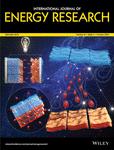Three-dimensional, porous, highly active α-MnO2/prGO hybrid nanocomposites as cathode of non-aqueous Li-O2 batteries
Funding information: National Key Research and Development Program of China, Grant/Award Number: 2016YFB0101201; National Natural Science Foundation of China, Grant/Award Numbers: 21503134, 21533005
Summary
Both the activity and structure of a cathode, when it is used in non-aqueous Li-O2 batteries, play a prominent role in the aspects of durability and capacity. In this work, α-MnO2/prGO hybrid nanocomposites with a three-dimensional (3D) porous structure are proposed to act as the cathode to improve the battery performance. Highly active α-MnO2/prGO nanocomposites with different mass ratios are synthesized through a two-step template method and a subsequent annealing process. It is found that the optimal 50% α-MnO2/prGO cathode exhibits outstanding discharge capacity of 13 294 mAh g−1 under the condition of 100 mA g−1. Meanwhile, with the limited capacity and currency density of 1000 and 100 mA g−1, respectively, the battery maintains excellent durability for 239 cycles. Significantly, it is clear that the excellent electrochemical performance of the nanocomposites is strongly associated with the synergistic effect of their distinct porous architecture and the ORR/OER catalytic activity.
Open Research
DATA AVAILABILITY STATEMENT
The data that support the findings of this study are available from the corresponding author upon reasonable request.




